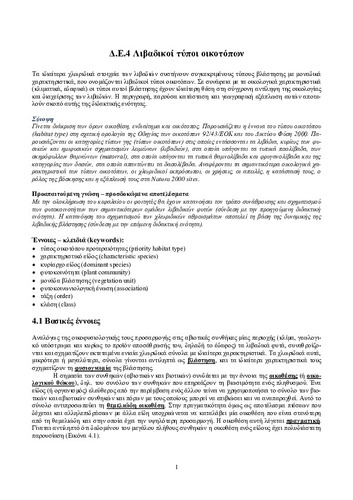EPUB
(6.06 MB)
Download
Adobe PDF
(5.17 MB)
| Title Details: | |
|
Rangeland habitat types |
|
| Authors: |
Vrachnakis, Michail |
| Reviewer: |
Papanastasis, Vasileios |
| Subject: | NATURAL SCIENCES AND AGRICULTURAL SCIENCES > AGRICULTURAL SCIENCES > NATURAL RESOURCES, EARTH AND ENVIRONMENTAL SCIENCES > NATURAL RESOURCES > LAND RESOURCES > LAND > RANGELAND MEDICINE AND HEALTH SCIENCES, LIFE SCIENCES, BIOLOGICAL SCIENCES > LIFE SCIENCES > FUCTIONAL AND ORGANISMIC BIOLOGY > ZOOLOGY/ANIMAL BIOLOGY > ORGANIC ANIMAL FARMING MEDICINE AND HEALTH SCIENCES, LIFE SCIENCES, BIOLOGICAL SCIENCES > LIFE SCIENCES > FUCTIONAL AND ORGANISMIC BIOLOGY > ECOLOGY > RANGE COLOGY NATURAL SCIENCES AND AGRICULTURAL SCIENCES > AGRICULTURAL SCIENCES > NATURAL RESOURCES, EARTH AND ENVIRONMENTAL SCIENCES > NATURAL RESOURCE MANAGEMENT > LAND MANAGEMENT > RANGE MANAGEMENT MEDICINE AND HEALTH SCIENCES, LIFE SCIENCES, BIOLOGICAL SCIENCES > HEALTH SCIENCES > NUTRITIONAL SCIENCES > ANIMAL NUTRITION |
| Keywords: |
Priority Habitat Type
Characteristic Species Dominant Species Plant Community Vegetation Unit Association Order Class |
| Description: | |
| Abstract: |
The specific floristic elements of rangelands recommend specific vegetation types with unique features, called rangeland habitat types. Consistent with the ecological characteristics (climate, soil) these vegetation types have a special place in the modern conceptualization of Rangeland Ecology and Management. The description, current status and geographical distribution of these habitat types are targets of this Unit. Upon completion of the chapter, students will understand how aggregation and formation of plant communities of the major groups of rangeland plants are created (link with the previous Unit). Understanding the formation of floristic aggregates underlies the dynamics of rangeland vegetation (link to the next Unit).
|
| Table of Contents: |
Unit 4. Rangeland habitat types
4.1 Basic cocepts 4.2 Natural and semi-natural grassland formations 4.2.1 Natural grasslands 4.2.2 Semi-natural dry grasslands and scrubland facies 4.2.3 Semi-natural tall-herb humid meadows 4.2.4 Mesophile grasslands 4.3 Sclerophyllous scrub (Matorral) - phrygana 4.3.1 Sub-Mediterranean and temperate scrub 4.3.2 Mediterranean arborescent matorral 4.3.3 Thermo-Mediterranean and pre-steppe bushes 4.3.4 Phrygana 4.4 Silvopastorals (from the category of habitat type: Forest) 4.4.1 Mediterranean deciduous forests 4.4.2 Mediterranean sclerophyllous forests Parallel documents Related web sources References Evaluation criteria A. Activities B. Self assessment |
| Technical Editors: |
Rapti, Elli Tantos, Alexandros |
| Type: |
Chapter |
| Creation Date: | 2015 |
| Item Details: | |
| License: |
http://creativecommons.org/licenses/by-nc-nd/3.0/gr |
| Handle | http://hdl.handle.net/11419/1197 |
| Bibliographic Reference: | Vrachnakis, M. (2015). Rangeland habitat types [Chapter]. In Vrachnakis, M. 2015. RANGELAND SCIENCE [Undergraduate textbook]. Kallipos, Open Academic Editions. https://hdl.handle.net/11419/1197 |
| Language: |
Greek |
| Is Part of: |
RANGELAND SCIENCE |
| Number of pages |
27 |
| Publication Origin: |
Kallipos, Open Academic Editions |


